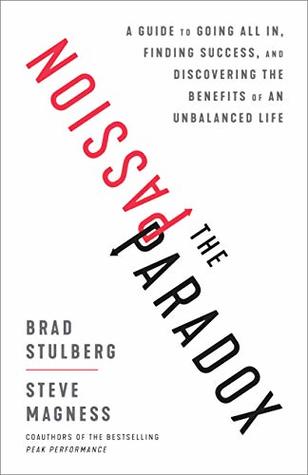More on this book
Community
Kindle Notes & Highlights
control over your passion so your passion doesn’t control you.
it’s just that if you don’t proactively prevent passion from veering off course, it’s likely to do so,
passion is fragile, and it must be handled with care.
Knowing how to sustain and channel it in a productive and healthy manner is the other—and equally important—half.
when you’re under passion’s spell, the reward you think you’re chasing—usually some sort of contentment or satiation—is merely an illusion.
Over time, and in a process similar to other addictive substances, our brains become less sensitive to dopamine, meaning we need more of it to feel good.
the line between what we consider a destructive addiction and a productive passion is a fine one, if such a line exists at all.
passion cannot coexist with the wonderful feeling of contentment. Passion builds on itself: the more we push, the more we get hooked on the feeling of pushing.
Our obsessions become a refuge. Places where we can fill the voids created by other insufficiencies in our lives.
If we don’t move on from our passions thoughtfully (a topic we’ll discuss later on), the same underlying biology and psychology that give rise to excellent pursuits can also give rise to harmful ones. Passion and addiction are close cousins.
feeling of struggle or “trauma” can be channeled into productive passions.
Passionate pursuits often become psychological refuges,
A fit mind-set for passion is constraining; it inherently limits one to activities that feel good immediately and makes one fragile to challenge or change.
A better approach to finding your passion is to lower the bar from perfect to interesting, then give yourself permission to pursue your interests with an open mind.
Especially when first exploring new ideas and activities, don’t let perfect be the enemy of good.
Select “interesting” over “perfect.”
If, however, you engage during moments of initial intrigue, your brain will do the opposite, hardwiring a neural connection that says, “It’s worth my energy and focus to pursue the things that interest me.”
nurture an open mind, and not move on so swiftly from the activities and ideas that capture your attention.
give yourself the freedom to explore budding interests enough to more accurately judge if they could grow into passions,
Rather, enduring motivation comes from satisfying three basic needs: competency, autonomy, and relatedness.
Competency is about having a sense of control over the outcome of your efforts and the ability to make progress over time.
Autonomy, also sometimes referred to as authenticity, is about acting in harmony with your innermost being. It means you’re connecting what you do with who you are.
have an intimate conversation with yourself. What do you really stand for? Do your outward activities reflect your inner self?
Relatedness: The final component of self-determination theory is one that binds us to others: the need to feel connected to and/or like you are a part of something larger.
it does mean that you’re more likely to stick with something that makes you feel like you are a part of something greater.
Activities that fulfill these three basic needs are the ones we should throw ourselves into.
Yet, as you’ll soon see, that would be a mistake. Because the best way to fully develop passion is gradually.
Resist the urge to assign too much importance to the initial excitement that comes with starting a new job, activity, or hobby.
the best route to making your passion a bigger part of your life is often not to choose must over should, but rather to choose must and should.
“Going all-in on your start-up might not be the best idea.”
Going all in on something makes you fragile, especially if you go all in prematurely.
When you go all in, you move from a place of wanting to succeed to needing to succeed.
“The day you say you have to do
something, you’re screwed. Because you are going to ...
This highlight has been truncated due to consecutive passage length restrictions.
the barbell strategy says that you should pursue your passion incrementally. Doing so relieves pressure and allows more room for error.
Other hand, taking the leap becomes a forcing function under the scarcity of time and resources. With nothing to fall back on, you must move forward. I agree there is a danger here, but you ought to consider opportunity cost of hybrid model.
There is, of course, a case to be made for going all in on a passion from the outset, for choosing must over should. Perhaps for those who truly thrive under immense pressure, going all in from the outset translates to better performance. But for the vast majority of people—at least according to the research—the best route to directing more time and energy toward a passion is to follow the barbell strategy,
faith is the confidence born out of realizing the fruits of practice.
you’ve put in the work and have the skills; that you’ve cultivated your passion incrementally for long enough and have what is required to take it to the next level.
based on confidence born out of realizing the fruits of practice. If you create a body of evidence that you’ll be successful for yourself (see this page), your leap won’t seem like that much of a leap at all.
the two main forms that the dark, bad kind of passion takes,
The rewards-driven variety, in which an individual becomes addicted to external results, recognition, and the validation of others. The fear-driven variety, in which someone does anything it takes to avoid failure, not wanting to disappoint others or themselves.
In both cases, passion is fueled by something other than a joy of the pursuit itself. And in both cases, passion easily turns into passio, suffering.
harmonious passion, when you become completely immersed in what you’re doing for the joy of the activity itself, it is often a by-product.
success,


